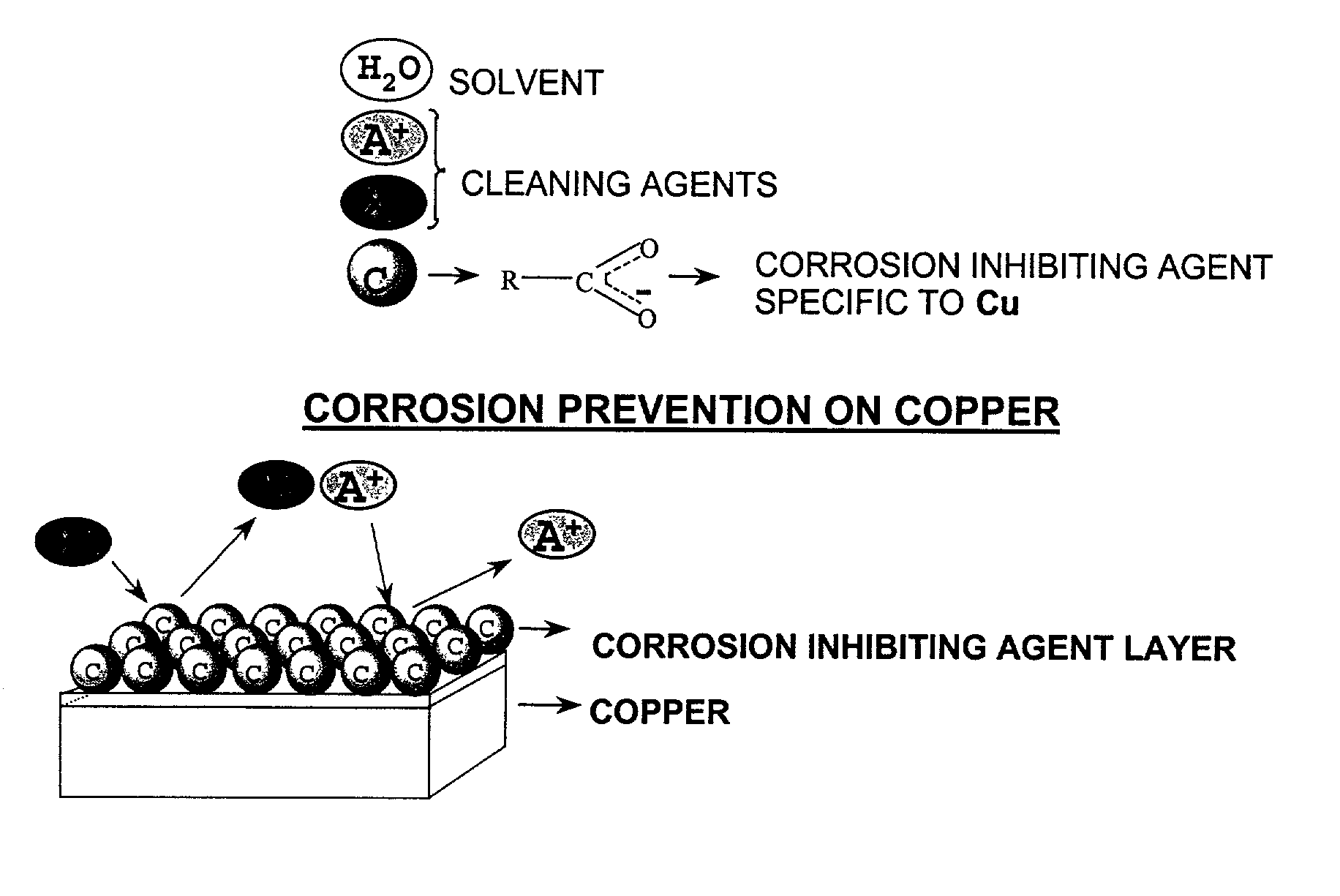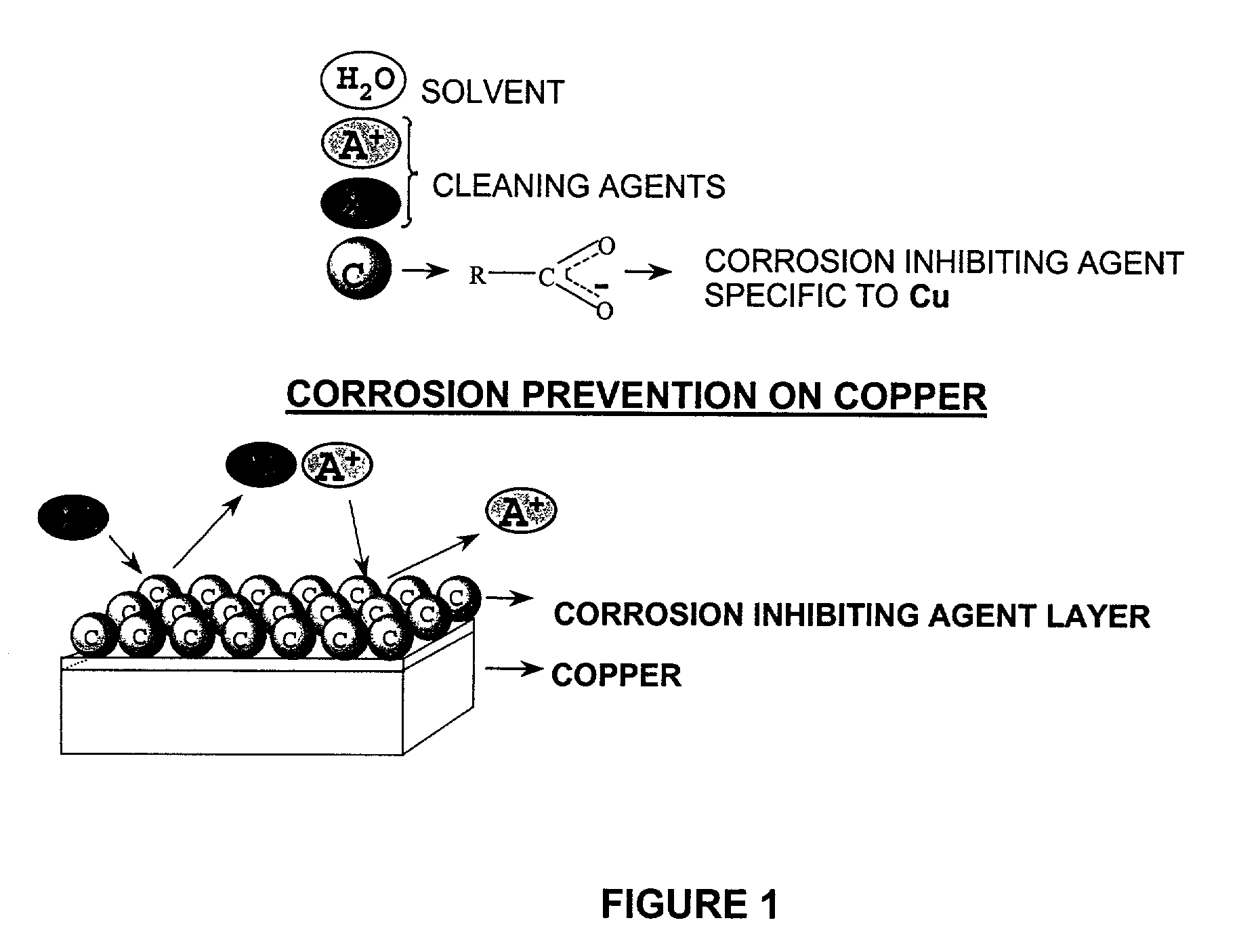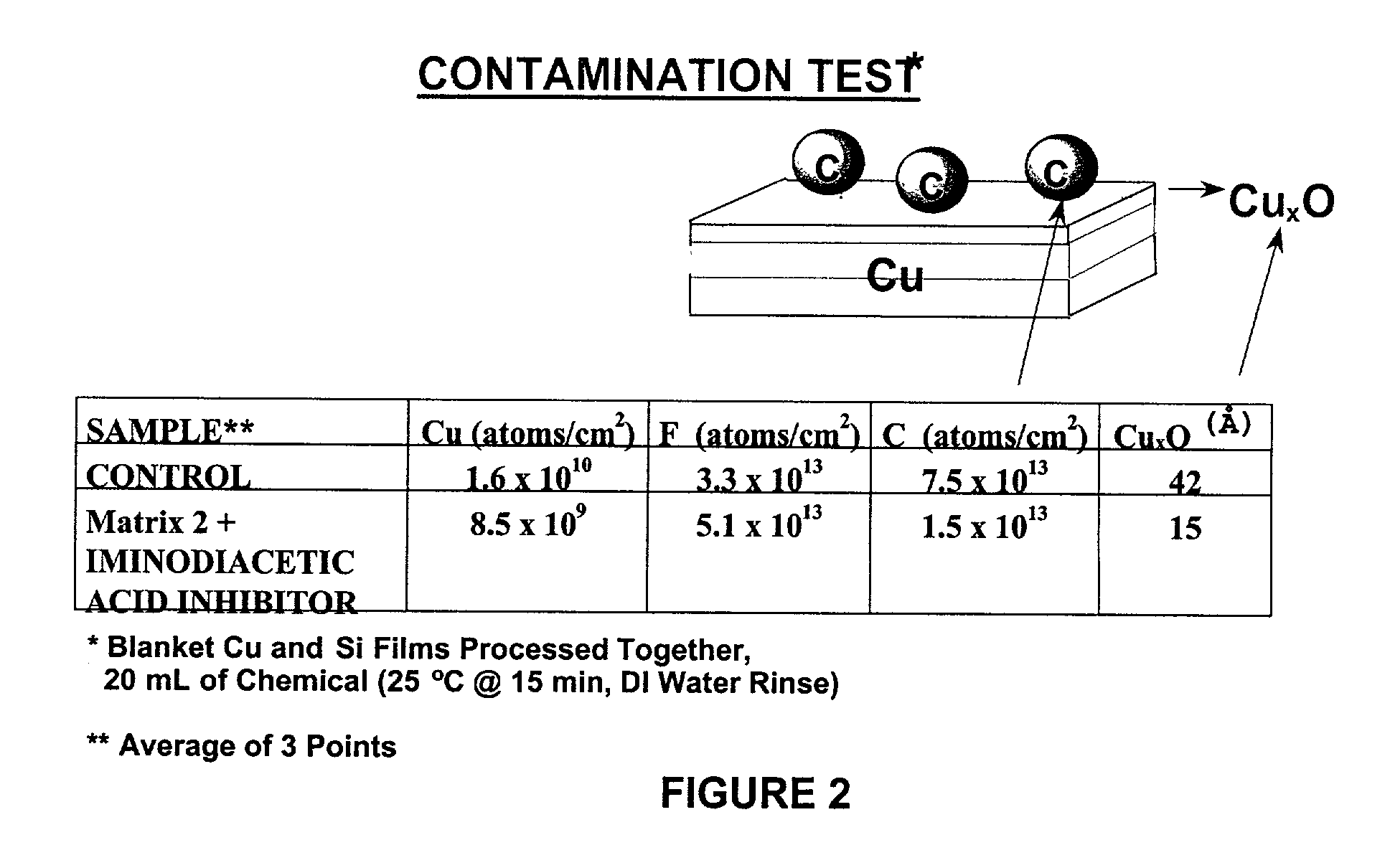Aqueous cleaning composition containing copper-specific corrosion inhibitor for cleaning inorganic residues on semiconductor substrate
a technology of corrosion inhibitor and inorganic residue, which is applied in the direction of detergent compounding agent, inorganic non-surface active detergent composition, instruments, etc., can solve the problems of undesirable metal layer corrosion, and conventional corrosion inhibitor additives that have detrimental effects on the cleaning process, so as to effectively remove inorganic residues, effectively remove metal halide and metal oxide residues, and effectively remove slurry particles
- Summary
- Abstract
- Description
- Claims
- Application Information
AI Technical Summary
Benefits of technology
Problems solved by technology
Method used
Image
Examples
example 1
[0102] Copper-specific corrosion inhibitors including either hydrogen-containing carboxylic acids or imines were tested in two different types of alkaline cleaning formulations, with the following components and characteristics.
4 TABLE 1 Temp., Copper Etch Components (.degree. C.) pH Rate (.ANG. / min) Formulation 1 dimethylacetoacetamide, 70 6.2 17.4 amine, and water Formulation 2 ammonium fluoride, triethanolamine, 40 8.6 7.5 pentamethdiethylenetriamine, and water
[0103] The copper etch rate was determined by a standard four-point probe technique. Addition of corrosion inhibitors in accordance with the present invention significantly slowed down the copper etch rate, as shown by the following table, and effectively prevented undesirable corrosion during the cleaning process:
5TABLE 2 Copper Etch Reduction of Temp. Formulation Concentration pH of Rate Etch Rate Corrosion Inhibitor (.degree. C.) Used (%) solution (.ANG. / min) (%) Iminodiacetic Acid 40 2 1.5 8.0 1-2 -73.3.about.86.7 Glyci...
example 2
[0104] A contamination test was carried out on Formulation 2 containing iminodiacetic acid inhibitor. The semiconductor wafer to be cleaned contained copper and silicon films. After the completion of the cleaning operation, the wafer was rinsed by deionized water at 25.degree. C. for about 15 minutes. The Secondary Ion Mass Spectrometry data (SIMS) obtained are as follows:
6 Cu (atoms / cm.sup.2) F (atoms / cm.sup.2) C (atoms / cm.sup.2) Cu.sub.xO (.ANG.) Uncleaned 1.6 .times. 10.sup.10 3.3 .times. 10.sup.13 7.5 .times. 10.sup.13 42 Wafer Cleaned 8.5 .times. 10.sup.9 5.1 .times. 10.sup.13 1.5 .times. 10.sup.13 15 Wafer
[0105] The foregoing results show that the copper oxide Cu.sub.xO has been effectively removed by the cleaning process, while carbon contamination, which is mainly caused by the organic corrosion inhibitors in the cleaning formulation, has been greatly reduced.
[0106] The present invention employs dilute alkaline fluoride in compositions for post CMP cleaning of silicon oxide ...
PUM
| Property | Measurement | Unit |
|---|---|---|
| weight | aaaaa | aaaaa |
| corrosion | aaaaa | aaaaa |
| electrical resistance | aaaaa | aaaaa |
Abstract
Description
Claims
Application Information
 Login to View More
Login to View More - R&D
- Intellectual Property
- Life Sciences
- Materials
- Tech Scout
- Unparalleled Data Quality
- Higher Quality Content
- 60% Fewer Hallucinations
Browse by: Latest US Patents, China's latest patents, Technical Efficacy Thesaurus, Application Domain, Technology Topic, Popular Technical Reports.
© 2025 PatSnap. All rights reserved.Legal|Privacy policy|Modern Slavery Act Transparency Statement|Sitemap|About US| Contact US: help@patsnap.com



